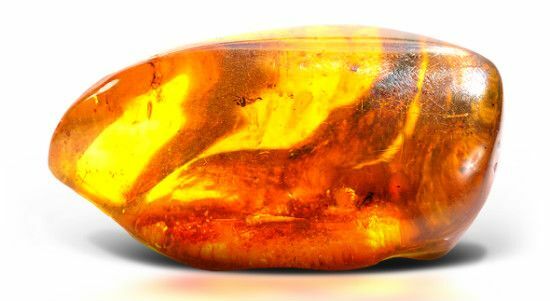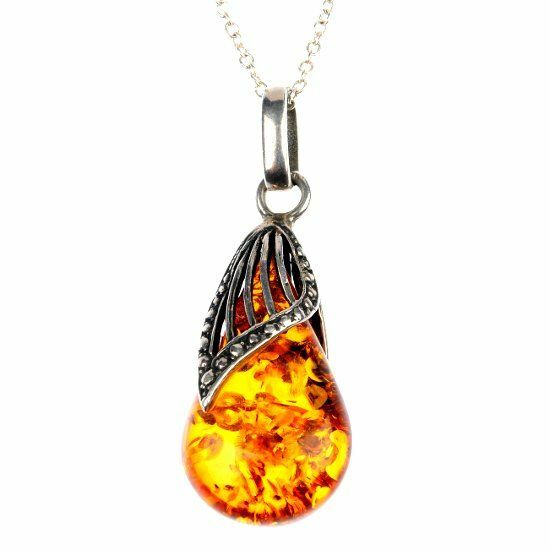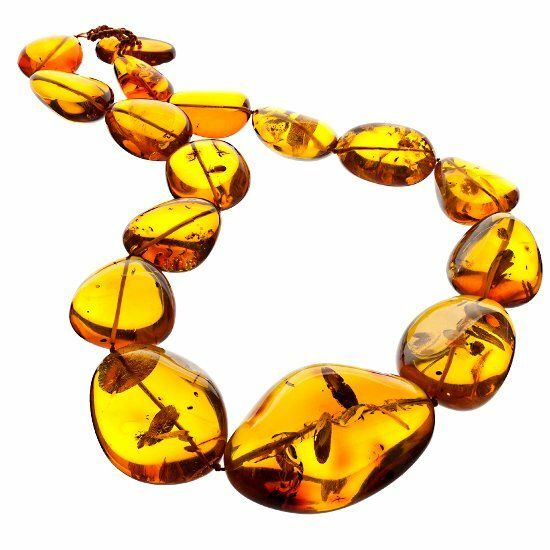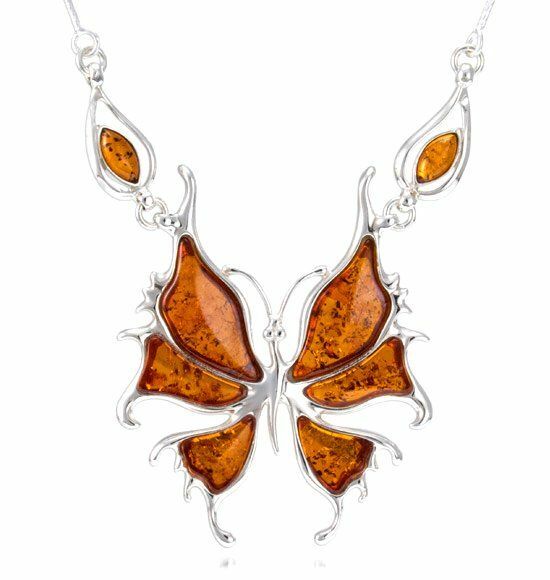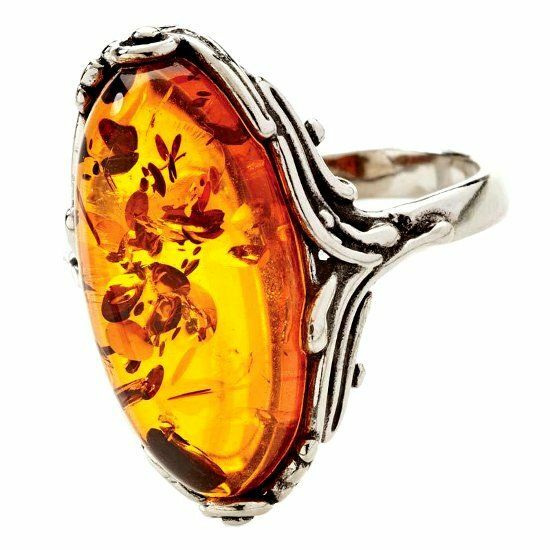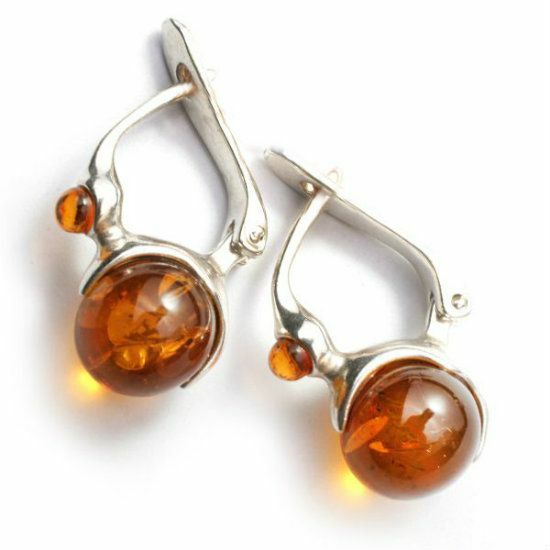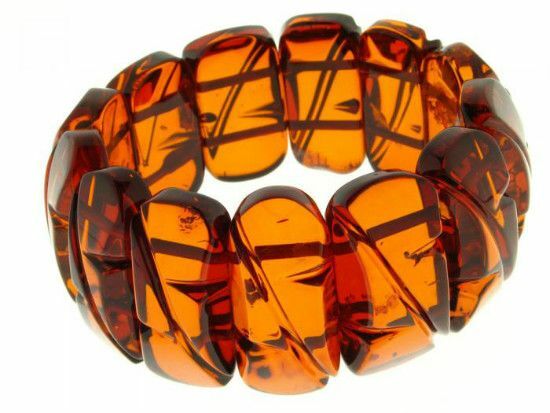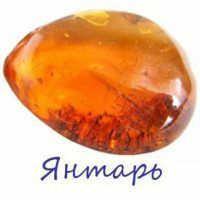
Amber is a unique precious stone of organic origin, whose extraordinary healing and magical properties are known to mankind since the Neolithic times. Actually, amber is fossilized wood resin, whose age is tens or even hundreds of millions of years.
- Stone history
- Mineral description
- Chemical composition and physical properties of mineral
- Amber varieties
- Amber deposits
- The healing properties of
- mineral Magic properties of amber
- Amber and zodiac signs
- Application of mineral
- Interesting facts about the stone
- How to distinguish natural amber from counterfeiting
- Stone care
- Pictures of amber and its products
History of the stone
For the first time people began to use amber in the Neolithic age when they had nrvye primitive tools( flint knives, bone awls, and others.), with which they were treated stone. This is evidenced by the numerous finds of archaeologists in Austria, Moravia and the Upper Pyrenees during the excavation of the sites of primitive people. And the first documentary references to amber are kept in the London British Museum and date back to the 10th century BC.
"Sunny gem", as it was often called amber, was loved in many countries of the world for many centuries and even millennia.
- In ancient Egypt, priests used amber to make special amber censers. Egyptians also believed that amber has some preservative properties, and used it in embalming the mummies of the pharaohs.
- In ancient Rome, the "amber fashion" dominated the reign of Nero( in 55-68 AD) It was brought by Phoenician merchants in the so-called "amber way".From it, luxury goods were made.
- The Greeks considered amber a "stone of the Sun" and called it "electr", which means "sunny" or "shining".They believed that he was able to give victory in battle, and took in military campaigns amber amulets.
- Healing properties of amber were described in their works by the ancient Greek healer Hippocrates( 460-377 BC).
- Ancient Roman scientist and encyclopedist Pliny the Elder( 22-79 AD) recommended amber products as a healing remedy for mental illnesses, as well as amulets for children. He adhered to this point of view regarding the unique properties of amber and its beneficial effect on children and the Central Asian scientist encyclopedist Al Biruni( 973-1048 AD).
- On the unique healing properties of amber in the Middle Ages, the well-known Persian scholar, philosopher and healer Avicenna wrote, considering amber a cure for various diseases.
- In 1551, a monograph appeared on the amber of the German researcher A. Aurifauber, in which more than 40 recipes for the treatment of various diseases with amber were presented. Not surprisingly, amber was used as a healing agent by the healers of many countries, and magicians made "elixirs of youth" on its basis.
- In the Middle Ages, amber was considered the best remedy for jaundice, as well as from throat and internal organs. During this period, amber objects of religious worship were in great demand in Europe.
- Believed in the healing power of amber and the Slavic peoples. They used necklaces from amber as a guard against the "evil eye", and amber crumbs - as incense in churches.
- Amber was used as incense in the East, where it was believed that it could strengthen the spirit of a person and heal his body.
- The greatest demand in Europe for amber was in the early XVII - mid XVIII centuries. Then the products from amber were the favorite gifts of the nobility.
- In Italy, amber products were used as talismans for successful hunting and ensuring the fertility of the earth.
- In Germany, amber beads were tied around the neck of small children, so that their teeth hurt painlessly.
- In China, a succinic acid-based medicine was used as a sedative and antispasmodic.
Description of mineral
Amber is a valuable jewelry and ornamental stone, which is a fossilized fossil resin of coniferous trees from 35 to 140 million years old.
Externally, amber is a transparent or translucent stone of brown color. Its color can be gently honey, golden, ivory and even brownish-black. The best are transparent specimens of golden hues.
Often in amber, you can see inclusions( inclusion) of ancient plants and insects, which makes the stone unique and raises its price.
The best sorts of amber are formed from the fossil pine "Pinus succinifera"( "Pinus succinifera"), which millions of years ago grew on the territory of the modern Baltic. That is why the Baltic amber is called succinite.
The very word "amber", according to some philologists, came from the Lithuanian word "Gintars", which translates as "defender of diseases."Other names of the stone and its varieties: "the gift of the sun", "tears of the sea", aikait, ambrit, romanite, valhovit, almashin, ambrosine, etc.
to the table of contents ^Chemical composition and physical properties of the mineral
The chemical composition of amber is high moleculara compound of organic acids with a predominance of succinic acid.
Its chemical formula: C10H16O.
Amber consists of:
- carbon( C) - 79%;
- hydrogen( H) - up to 10,5%;
- oxygen( O) - up to 8.5%.
In addition to the main components in the chemical composition of amber, depending on the deposit in the form of impurities may contain nitrogen, sulfur, aluminum, silicon, iron.
For example, in Baltic amber contains:
- copper( Cu) - 0.001%;
- manganese( Mn) 0.025%;
- iron( Fe) - 0.55%;
- sodium( Na) - 0.16%;
- calcium( Ca) - 0.1%;
- magnesium( Mg) 0.025%;
- Aluminum( Al) - 0.07-0.74%;
- silicon( Si) - 0.16-0.71%.
Amber has an amorphous( not crystalline) structure and refers to soft stones. Its hardness on the Mohs scale is only 2-3 units, and the density varies from 1.05 to 1.3 g / cm3 and depends on the content of impurities in amber. The composition of impurities also affects the color of amber, which can range from almost white to reddish-brown. In total, there are more than 300 different amber tints, also caused by the dispersion of white light.
The degree of transparency of the stone differs - it can be either absolutely transparent, or semi-transparent, and cloudy. Amber glitter - glass, bold, sometimes matte or resin. The stone is easily processed and polished, and after processing darkens.
Unique in many physical properties of amber:
- Due to its density, comparable to the density of sea water, amber does not sink in salt water.
- In fresh water, amber does not float, does not dissolve, and eventually swells and can increase in volume up to 8%.
- In boiling water( at a temperature of at least 100 ° C), amber softens.
- Amber is completely soluble in hot nitric acid and partially soluble in alcohol, ether, chloroform, benzene, turpentine and linseed oil.
- Under the influence of external factors - oxygen, light and heat - the stone gradually darkens and becomes brittle.
- Under the influence of high temperatures, the following changes occur:
- at a temperature of up to + 150 ° C, amber softens;
- at a temperature of 350 ° C, amber melts and lights up, emitting ethereal aromatic vapors;
- at a temperature of + 1000 ° C, amber is completely volatilized.
- Under the influence of ultraviolet irradiation, amber luminesces. The degree of its luminescence depends directly on the degree of its transparency.
- Amber is electrified. This can be observed if you rub it with a woolen cloth. Its dielectric constant is 2.863 F / m.
Amber varieties of
There are more than 200 varieties of amber. The most famous of them:
- Succinite is the highest quality amber of yellow, orange, reddish, white, ivory, characterized by the highest content of succinic acid. This is the most famous variety of amber.
- Glessite is an opaque amber of red-brown, dark brown or black-brown color, containing a minimum amount of impurities.
- Gedanite - very fragile amber, yellow wine, dirty yellow color, not containing succinic acid. This type of amber contains a minimum amount of oxygen and, because of its fragility, is called "rotten amber".
- Stenthenite is a very fragile opaque amber of brown-black color.
- Bokkerit - dark dense opaque amber of brown color.
- Kitsellit - amber of yellow or olive green color.
- Sraufit - amber is yellow-red or blood-red.
Amber deposits of
The largest and best deposits of amber are in Russia, in the Kaliningrad region, as well as in the Baltic countries, on the coast of the Baltic Sea. It is here that the best amber, called succinite, is mined, it is called "the gold of the Baltic".
Deposits of other varieties of amber are also found in Poland, Romania, Canada, Myanmar, Mexico, Ukraine, Germany, the USA, the Dominican Republic and Sicily.
to contents ^The healing properties of mineral
The healing properties of amber are scientifically proven and are due to the content of succinic acid in it, which is the strongest biostimulator.
Since ancient times, amber has been used with:
- thyroid dysfunction;
- sore throat;
- diseases of the ears;
- attenuation;
- asthma attacks;
- arthritis.
Modern lithotherapists actively use amber for:
- to relieve headaches;
- treatment of sore throats;
- improved cardiac performance;
- treatment of joint disease;
- metabolism activation;
- treatment of skin diseases;
- treatment of blood diseases;
- recovery of the body's defenses;
- improving bowel and kidney function;
- stimulation of the nervous system;
- relieving inflammation.
Helps amber in the complex treatment of tumors, including malignant, and in the treatment of goiter.
For therapeutic purposes, both amber and its crumb are used, which is added to potions and tinctures.
Traditional healers believe that amber generally has a beneficial effect on the human body and can cure all diseases.
to table of contents ^Magic properties of amber
The magical properties of amber are no less diverse than medicinal ones. Since ancient times, this stone and its products have been used as powerful talismans and amulets, and incense, made on its basis, in religious rites. Some mages claimed that in the frozen pieces of amber, there are spirits.
It is believed that amber is able to:
- protect against damage and bad eye;
- strengthen intuition;
- bring luck;
- to present to the owner vivacity of spirit;
- draw the attention of loved ones and friends;
- bring good luck on the hunt and in battle;
- protect from fires;
- bring happiness to the house.
For many people, amber was a symbol of happiness and health.
to the table of contents ^Amber and zodiac signs
Astrologers recommend wearing amber practically to all the signs of the zodiac. The exception is only Taurus, for whom amber is not the best option as an ornament or amulet.
But for the fire lions, solar amber is just a find. He will become a powerful talisman against the evil eye, increase vitality and strengthen intuition.
to contents ^Application of mineral
Different varieties and varieties of amber find a variety of applications:
- In jewelry and in arts and crafts. The best examples of amber are used for making jewelry, art items and various household items. Used for inlaying jewelry and decorative items and amber crumbs.
- In the pharmaceutical and medical industries. Succinic acid is used to make medicines.
- In agriculture. Amber acid is used to accelerate the growth of plants and increase yields.
- In the chemical industry. Fused amber is used as raw material for making amber enamels, varnishes and rosin. Amber varnish is covered with furniture, musical instruments, electrical wires and even cans.
- In engineering. Given the excellent electrical insulating properties of amber, it is widely used as an insulator, including in ionization chambers of X-ray meters.
Interesting facts about the stone
- In the XIII century, the personal doctor of the Pope Boniface VIII produced an "elixir of immortality", which included amber.
- Martin Luther( preacher of the XV century) always carried with him a piece of amber, in order to prevent the formation of stones in the kidneys.
- In the beginning of our era, amber with inclusions of insects was especially appreciated. Such specimens of amber cost the Phoenician merchants 60 daggers and more than a hundred swords.
- At the end of the XIX century, amber was made of smoking accessories, believing that they can save from cancer, neutralizing carcinogenic resins.
- The legendary Amber Room of the Tsarskoye Selo Palace became the triumph of amber.
How to distinguish natural amber from forgery
Today, apart from natural amber, you can find pressed amber - a cloudy stone obtained from powdered and compressed natural amber with the addition of dyes, and copal - amber formed several tens of thousandsnot millions) years ago, the so-called "young" amber. The difference between digging from natural amber is that it is less durable, and this can affect its service life.
Found on the market of stones and imitation of amber. The cheapest ones are made of plastic and glass. To distinguish them from natural amber is quite simple, knowing its basic physical properties.
- Look closely at the stone. Natural amber is characterized by transitions of saturated natural hues and a unique pattern with the absence of artificial sparkles and bubbles.
- Take the stone in your hands. Natural amber is warm and very pleasant to the touch.
- Heat the product without access to oxygen. Even with minimal heating, natural amber will begin to exude a pleasant pine-tree aroma. With more intense heating, it will begin to melt, so do not get carried away by this experiment.
- Put the stone in a saline solution( 8 tsp to a glass of water).Natural amber will pop up.
- Rub the stone. Possessing high electrostatics, amber will attract to itself strings or small pieces of paper.
- Look at the stone under the ultraviolet rays. Natural amber luminesces.
Caring for the stone
When buying amber, it should be remembered that this soft stone requires careful treatment.
- In order to protect it from chips and cracks, it is recommended to store this stone in a separate, necessarily hard case( not in a bag!).
- When wearing products made of amber, you should avoid their constant contact with metal and other hard surfaces.
- Amber can not be subjected to abrupt temperature changes, heat, rough mechanical influences and prolonged exposure to sunlight.
- You can not clean amber with chemicals and soap solutions
- In case of severe dirt, opacities or deformation of amber, it is better to contact professional jewelers.
Pictures of amber and its products
